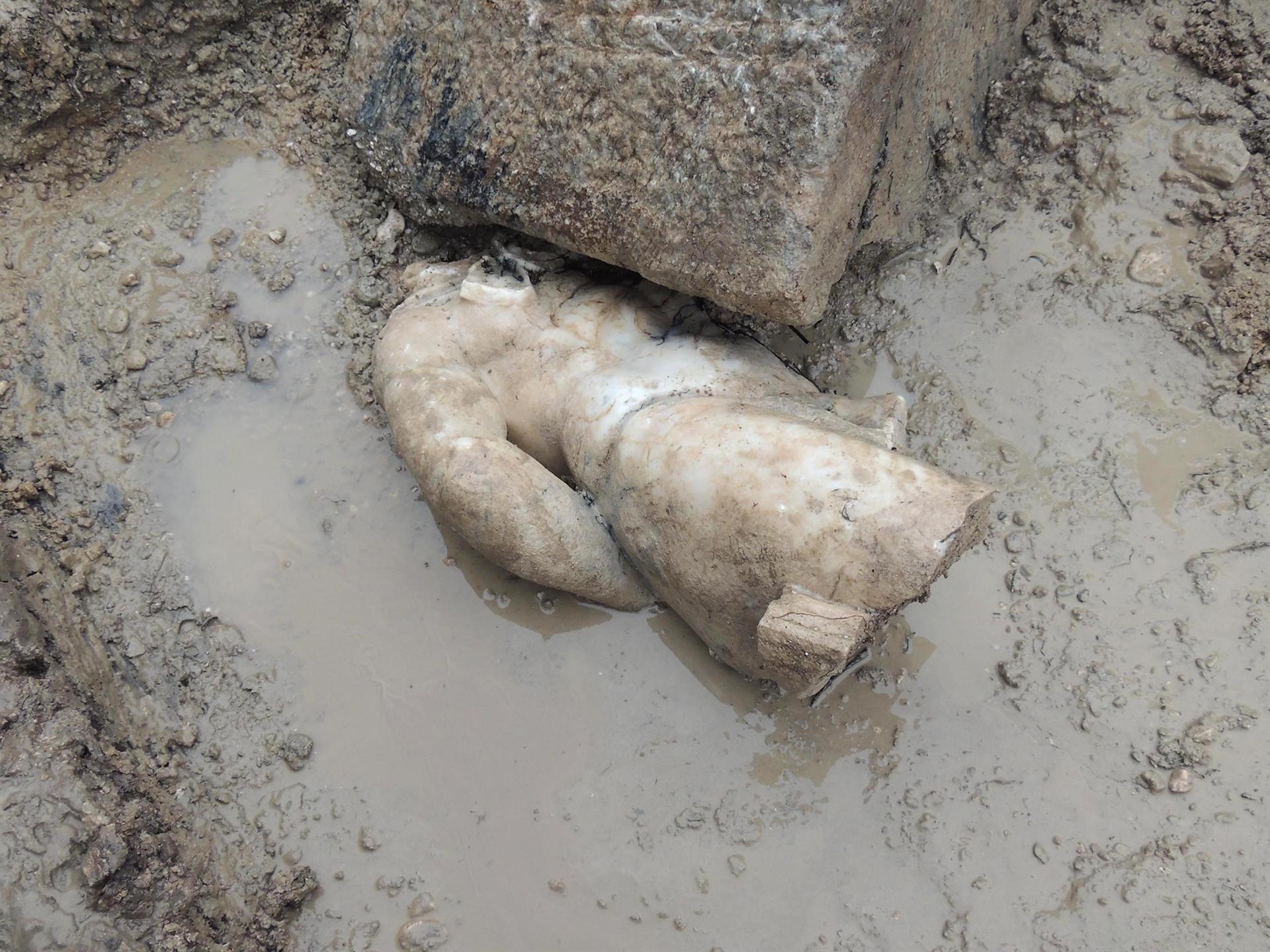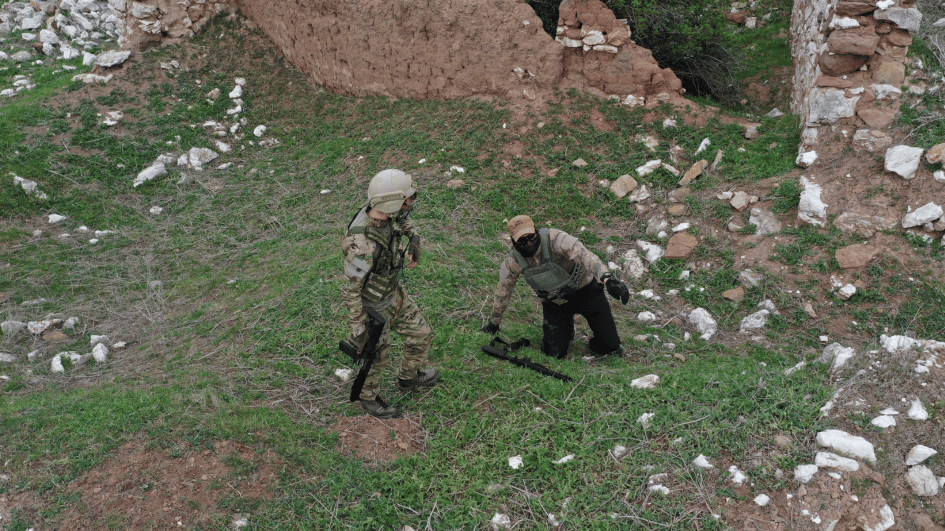Marble Heracles statue found in Aizanoi
KÜTAHYA

During excavations carried out in Penkalas Stream in the ancient city of Aizanoi, which is located in the Çavdarhisar district of the western province of Kütahya and on the UNESCO World Heritage Tentative List, a headless marble statue of the semi-god Hercules, known as “Heracles” in Greek mythology, has been found.
Professor Gökhan Coşkun, who is heading the excavations, stated that the statue is compatible with the “resting Hercules” typology in the archaeological literature and said, “Although the head part was not preserved, we can easily understand that it is Heracles, based on the lion’s skin on it.”
Excavations in the ancient city of Aizanoi, which dates back to 3,000 years B.C. and is thought to be one of the metropolises of the period with its historical structures such as the theater, stadium, Zeus Temple and Agora, continue on the Penkalas stream.
The statue of Hercules was unearthed after the excavation of the heads of the statues of Aphrodite, the goddess of love and beauty, and Dionysus, the god of wine.
Also the head of Dumlupınar University Archeology Department, Coşkun stated that most of the pier walls of the Penkalas Stream were unearthed and that they still find various sculpture pieces in the stream bed.
“Heracles is the son of the god Zeus and a mortal in ancient Greek culture. He was known as semi-god and after a while he became a god. Temples were built for him. His name was ‘Hercules’ in Roman times. The ‘resting Hercules’ is a type used in many places in the ancient world. Today, there are statues of Heracles of this type in various parts of the world, but we found this type of Heracles statue for the first time in Aizanoi,” Coşkun said.
















